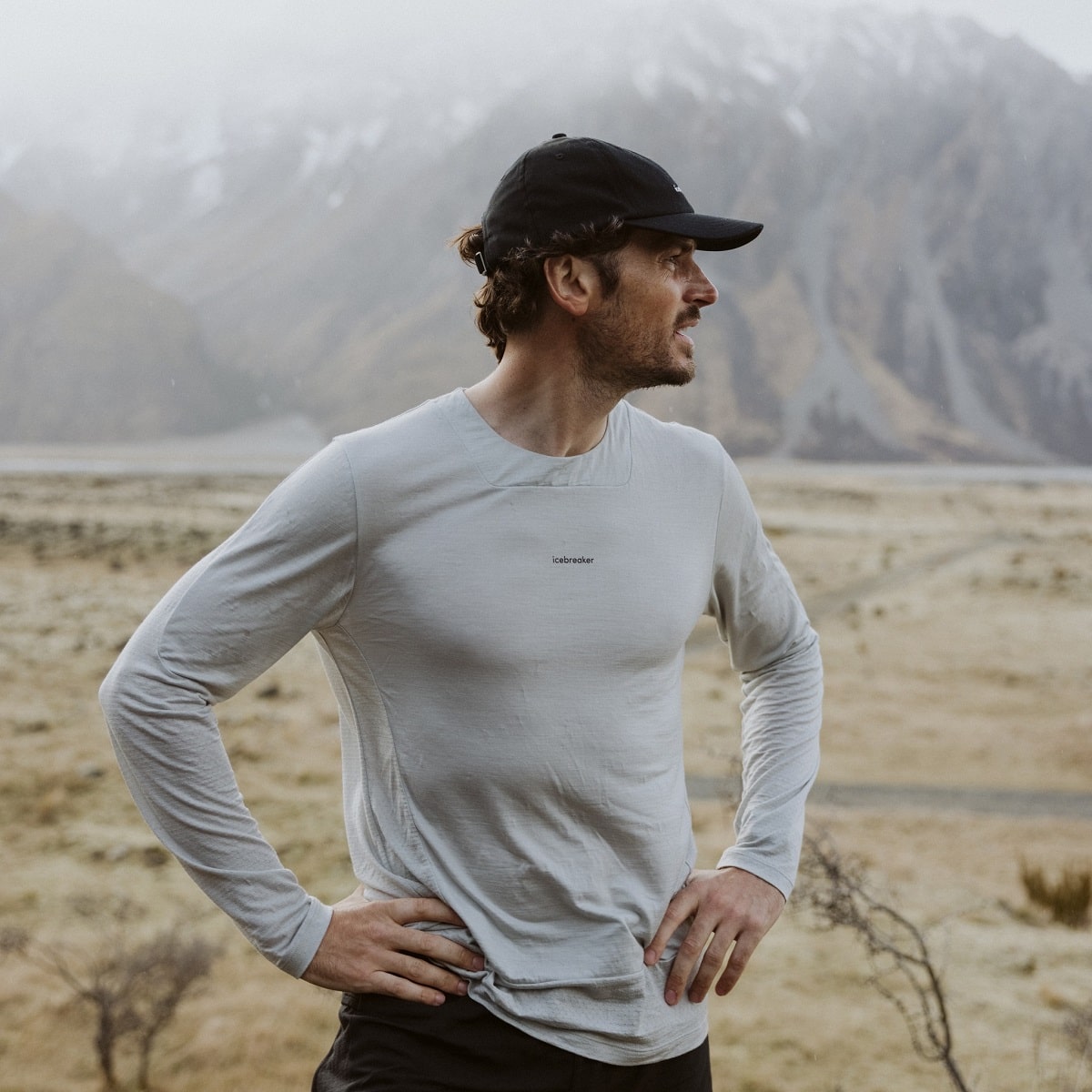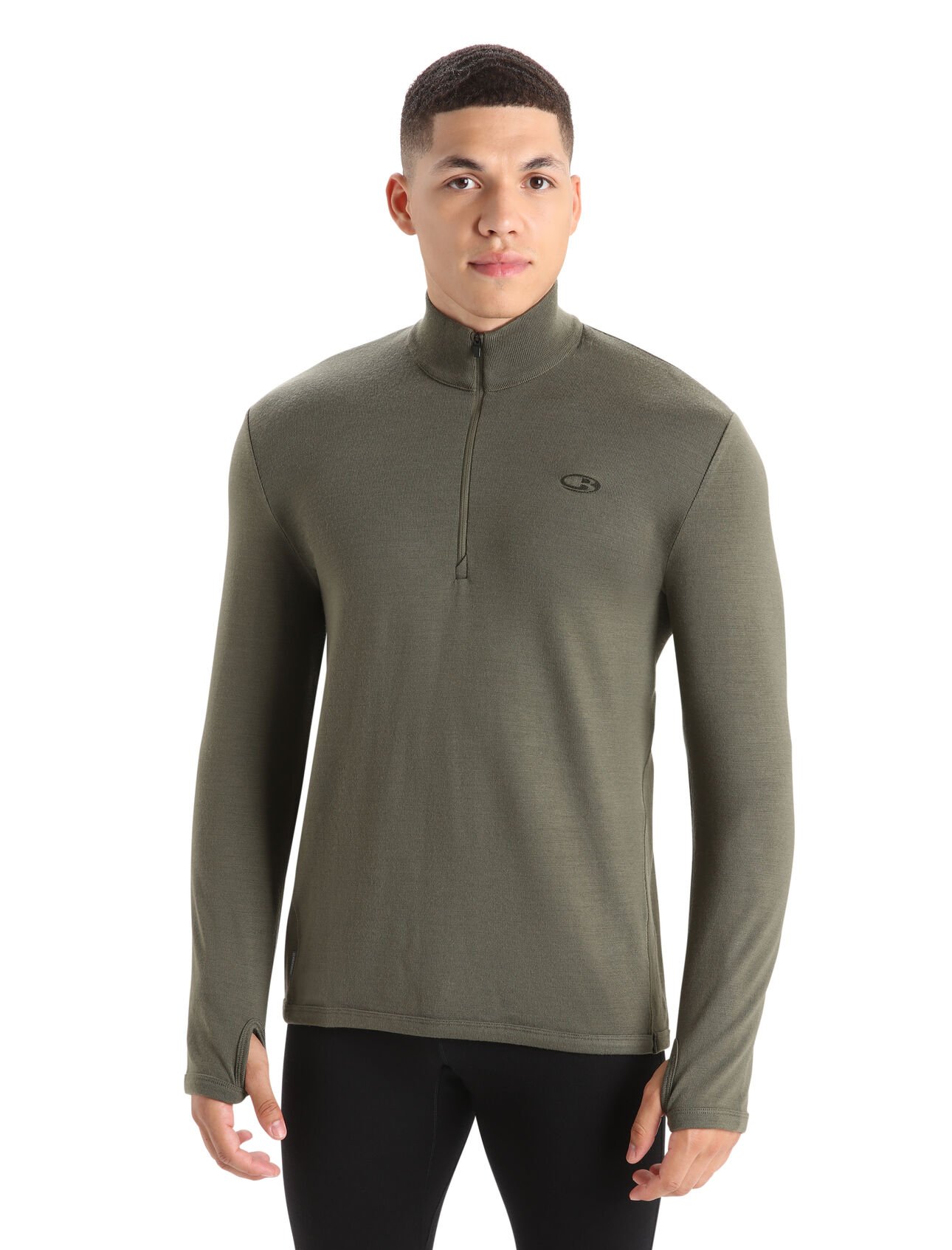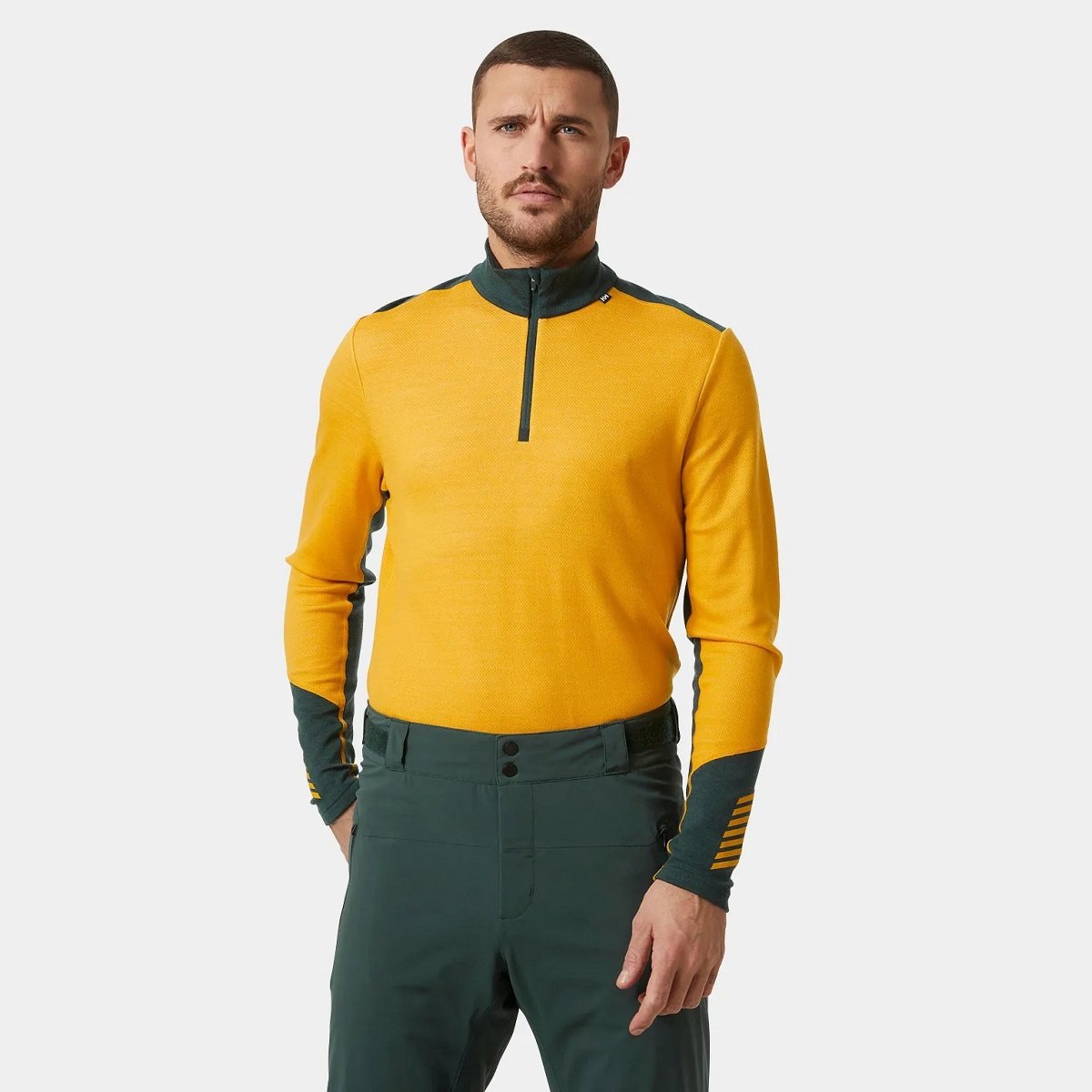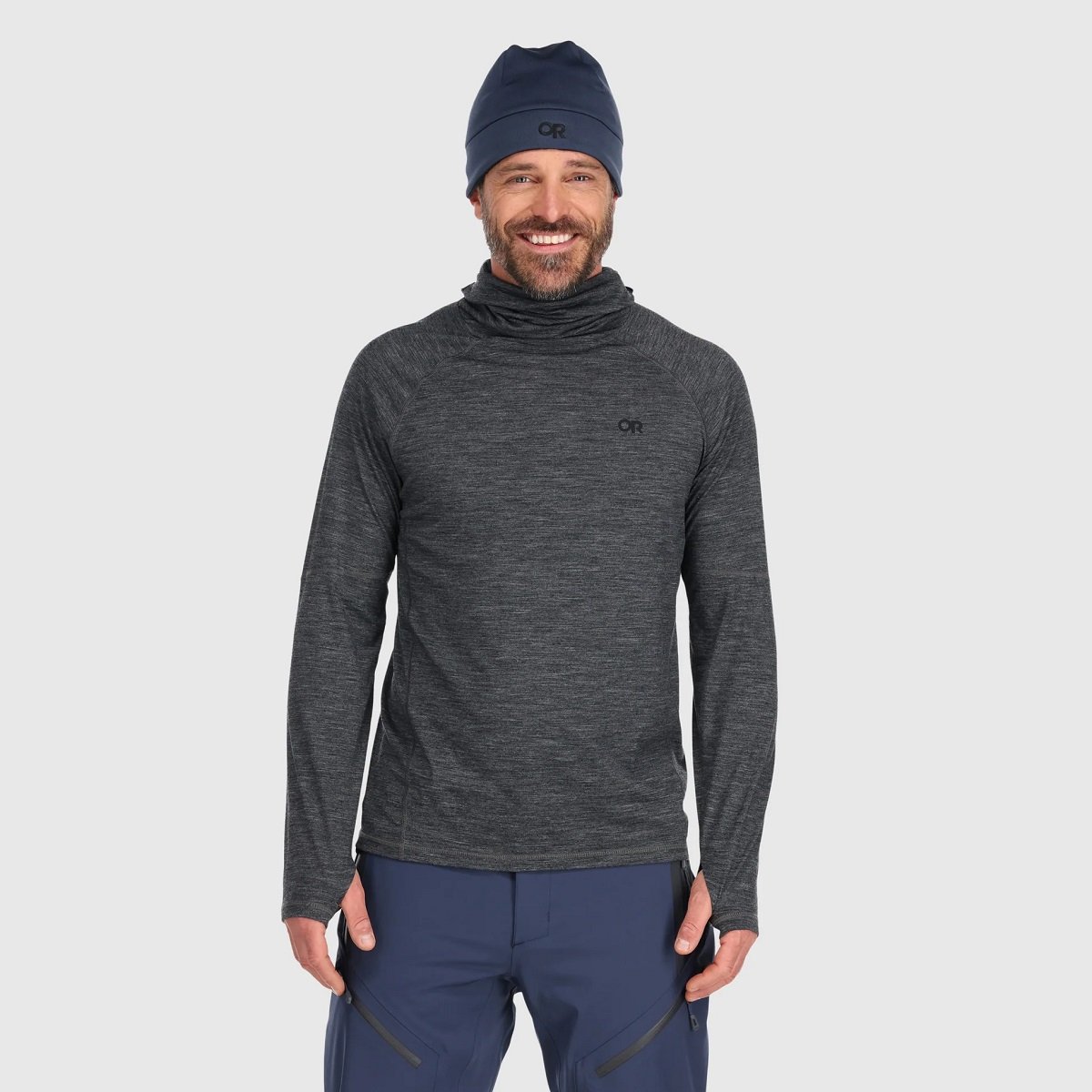1
HOME > Tips & Advice >
WHY MERINO WOOL MAKES THE IDEAL ACTIVE FABRIC
Written by Ivan Yaskey in Tips & Advice on the 8th November 2023

Activewear – the category encompassing gym clothes to hiking, running, and other specialty outdoor apparel – has found itself in a conundrum in recent years. The materials and technologies improving performance, from polyester to odor-resistant and moisture-wicking treatments, aren’t sustainable. Going for a jog or even washing your gym T-shirt releases microplastics that end up in the environment. Performance treatments, meanwhile, utilize PFAS, also known as “forever chemicals,” in some form. This reckoning has resulted in three different directions for activewear. One, companies are starting to rethink and return to cotton. Two, they’re exploring various plant-based fibers, like bamboo and hemp, which, while sustainable in theory, sometimes end up as semi-synthetics due to how fibers get broken down. Three, merino wool has a growing presence, seeing its profile rise beyond skiing gear. Yet, many hesitate to put on wool to go for a run or even spend a few hours at the gym, thinking it’s too itchy or will feel rough and heavy. Merino upends these assumptions, resulting in a softer, smoother, and lighter fabric that wicks away moisture, regulates temperature, and controls odors without additional treatments:
What is Merino Wool?
Merino wool starts with the shearing of a merino sheep, resulting in about 10 to 18 pounds of fleece per sheep, or enough to knit about four sweaters. While outdoor brands have explored the benefits of merino wool’s finer, soft, yet crimped texture in recent decades, its history goes back to some point between the 12th and 14th centuries. During these years, the Phoenicians allegedly introduced these sheep to the Asia Minor region, and the Moors took them to Spain, where they were supposedly bred with breeds from England. Breeding these hybrid sheep held up a key portion of the country’s economy well into the 18th century. Spain started loosening its stranglehold on this product, partially in response to invasions that cut down its sheep population early in the 19th century. This move resulted in Australia breeding its own merino sheep beginning in 1797, resulting in an even finer wool, as well as American merchant William Jarvis bringing some sheep back to the United States to breed in the state of Vermont. Eventually, wool-making in the U.S. shifted toward the West by the end of the 19th century, and both Australia and New Zealand set the industry’s pace and quality. This juxtaposition created two different types of wool: The heavier, more wrinkled American version containing a higher concentration of lanolin, and the finer Australian version. A gift from the U.S. to Australia during the 19th century resulted in breeding among the two types of merino sheep and altered Australia’s product permanently.
Especially compared to other varieties of wool, merino:
- Is known for a finer crimp resulting in a softer texture that’s less likely to irritate the skin.
- Has smaller-diameter fibers, generating a more flexible material: For a comparison, merino ranges from 15.5 to 23 microns in diameter, while fibers 25 microns and over result in a heavier, coarser product that’s likely to irritate the skin.

Characteristics and Benefits of Merino Wool
Unlike most activewear fabrics, merino wool doesn’t start with synthetic fibers and, in fact, biodegrades in the right conditions. Additional treatments aren’t needed for moisture-wicking and breathability. Characteristics include:
Warmth and insulation: Extreme outdoors enthusiasts abide by the saying, “Every ounce counts.” Similar to down, merino delivers a high amount of warmth for its weight, which is why it initially took off among skiing and backpacking crews.
Water absorption: The reason cotton fell out of favor among activewear brands? Once it absorbs and holds onto moisture, it feels damp and heavy, increasing risks for hypothermia in the process. Merino, by contrast, absorbs moisture, holding up to 30 percent of its weight, without this sensation.
Durability: Despite its finer size, merino’s crimp results in a durable material that’s less likely to stretch out and pill – concerns for synthetic fibers. More specifically, each fiber can be bent up to 20,000 times without breaking or coming apart. This feature alone results in a fabric that generally lasts longer than polyester or spandex. As a note, stress and abrasion can wear merino, and in turn, some may notice thinning or holes start to form around the elbow or knee area.
Breathable and cool: While it can act as an insulator, merino assists with both wicking away moisture and regulating body temperature. Coupled with a lighter construction than typical wool fabrics, these factors let your skin breathe during the warmer months and help regulate perspiration in the process.
Moisture wicking: Already alluded to, merino’s hydrophilic fibers move moisture away from the skin and absorb it, rather than cause it to evaporate. This quality prevents sweat from building up as you work out, keeping you cool, dry, and comfortable in the process.
Soft: A softer handfeel is a given for activewear. After all, who wants to be running or doing crunches with rough fabric rubbing against their sweat-covered skin? The finer size of merino fibers results in a silkier, less-stiff material, and the absence of a hook-like texture further limits irritation and the prickly sensation we associate with wool sweaters.
Antimicrobial and odor resistant: The lanolin present in merino delivers a degree of antimicrobial action, controlling bacteria that could cause odors to set into the material. Wicking properties, meanwhile, further discourage this effect. Long term, your workout clothes continue to smell fresh after washing rather than develop a slight yet noticeable odor.
Appearance: When tightly knit into a thinner, active-style fabric, merino offers greater drape, maintains its shape, and is less likely to wrinkle, including if you fold your clothes into a suitcase or gym bag. Added to this, the knit fibers move with your body without requiring elastane or polyester.
Layering: Building off the points already discussed here, merino wool layers well, making it ideal for both warm- and cold-weather active use. In both conditions, its ability to regulate body temperature and moisture means that you’ll neither be too hot nor too cold, and your sweat won’t leave you with moist, uncomfortable garments and clammy skin.
Stain resistance: Here, too, no additional treatment needs to be added to repel dirt and stains. In most cases, you can throw your merino activewear into the wash without having the stain set in.
UV resistance: Especially in hiking and skiing markets, clothing often comes with a UPF rating. Due to its origins as the hair covering a sheep’s skin, merino wool provides natural UV resistance.
Fire resistant: Unlike synthetics, merino is less likely to melt if exposed to high heat, thus improving the safety of the wearer.
Biodegradable: As conversations about disposing of clothing continue, fully wool-based products have an edge: The material, without blended fibers, coatings, or additives, disintegrates once buried into the ground and provides a source of carbon and other nutrients for the soil. This process takes about 12 months for 100% wool garments.

However, despite these benefits, you’re advised to keep the following in mind concerning the care and maintenance of merino:
- Avoid wearing ultra-tight garments: The fabric isn’t as stretchy as spandex and will start to thin and develop holes at stress points with time.
- While merino can be placed in the wash without shrinking, throwing it into the dryer can damage and shrink the fibers.
- Moths go after wool garments. Be mindful of where and how you store your merino activewear: Excessive sweat and skin cells attract these pests, so consider using a natural moth-prevention method, like adding lavender, wherever you store your clothing.
Where You’ll See Merino Wool Used
Merino wool’s softer, finer knit makes it ideal for:
- Base layers used in hiking and skiing for its ability to insulate without adding extra weight.
- Socks, especially due to its natural moisture-wicking and odor-control properties.
- Outerwear, for its ability to keep the body warm without adding bulk and how it layers with other garments.
- Winter hats and scarves, for how it traps body heat without irritating the skin.
- T-shirts, long-sleeve shirts, and sweaters, for its combination of moisture-wicking and heat-retention properties, lighter weight, and cotton-like feel when knit.


Trending
2
3
4
5
6
7
8
9
10










